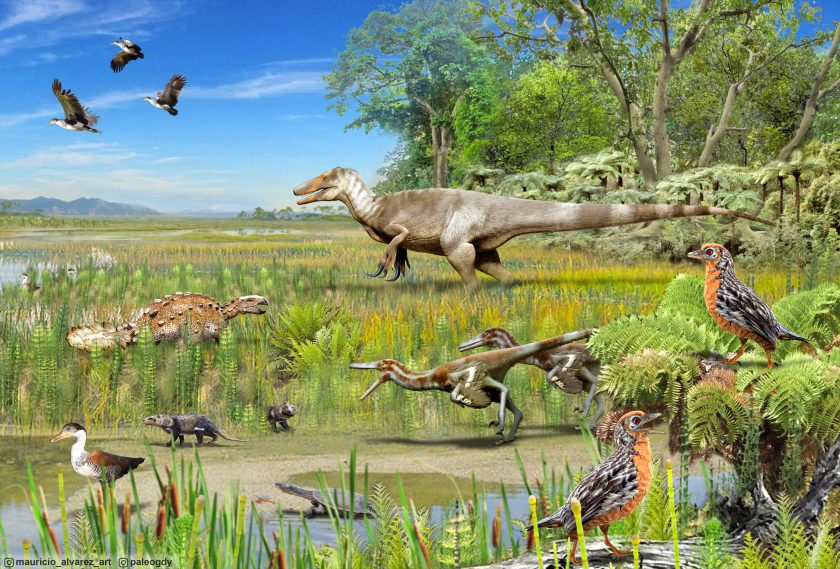Dino Diversity in Ancient Patagonia
December 12, 2023

A study led by the Department of Earth and Planetary Sciences is providing a glimpse into dinosaur and bird diversity in Patagonia during the Late Cretaceous, just before nonavian dinosaurs went extinct.
The fossils represent the first record of theropods — a dinosaur group that includes both modern birds and their closest nonavian dinosaur relatives — from the Chilean portion of Patagonia. They include giant megaraptors with large sickle-like claws and modern birds.
Nonavian theropod dinosaurs were mostly carnivorous and included the top predators in the food chain. The research shows that in prehistoric Patagonia, these predators included dinosaurs from two groups — megaraptors, which could reach 25 feet in length, and unenlagiines, which ranged from chicken-sized to 10 feet tall and were probably covered in feathers.
“The fauna of Patagonia leading up to the mass extinction was really diverse,” said lead author Sarah Davis, who completed this work as part of her doctoral studies with Professor Julia Clarke.
The bird fossils were also from two groups — enantiornithines and ornithurines. Although now extinct, enantiornithines resembled sparrows with beaks lined with teeth and were the most diverse and abundant birds millions of years ago. Ornithurae includes all modern birds living today. The ones living in ancient Patagonia may have resembled a goose or duck, though the fossils are too fragmentary to tell for sure.
The research was funded by the National Science Foundation, the National Agency for Research and Development of Chile, and the Jackson School of Geosciences.
Back to the Newsletter